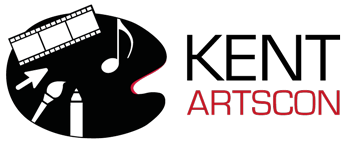
Katherine Mickle is an Associate Professor of Art at Slippery Rock University of Pennsylvania where she teaches all levels of Photography and intermittently teaches Drawing and 2D Design. Katherine creates work that often combines imagery in order to create multi-layered, personal, and social meaning. She is keenly interested in perception and language. Her current research includes faculty/student collaborations with geologists traveling to the White River Badlands of South Dakota. Katherine graduated from Ohio University with her Master of Fine Arts in Photography. She earned her MA in Photography with a minor in Painting from Stephen F. Austin State University in Nacogdoches, Texas. Katherine received her Bachelor of Fine Arts with a second major in Spanish from Slippery Rock University, studying for one semester at the Universidad de Sevilla, Spain.
Katherine will be presenting on behalf of her co-authors, Dr. Patrick Burkhart, Geology, Geography & the Environment, Slippery Rock University of Pennsylvania and Dr. Paul Baldauf, Marine & Environmental Sciences, Nova Southeastern University, Florida, USA
Art and Science: Collaborative Field Research
Many approach science and art as mutually exclusive. The intersection between the two produces an important arena for integrated knowledge and discovery. Metaphoric bridges are built for more robust, inclusive outcomes.
In a similar spirit as Hayden inviting Thomas Moran to join the Geological Surveys of the 1870s, the Badlands Working Group established and led by Dr. Patrick Burkhart, a hydrogeologist of Slippery Rock University of Pennsylvania began inviting artists to join in 2006 in order to advance the collection of visual data and foster creative approaches to scientific inquiry while investigating landscape formation in Badlands National Park, South Dakota. Interdisciplinary faculty/undergraduate research expeditions investigating both art and science have led to diverse analyses of landscape as well as an exploration of unique pedagogical approaches. Everyone participates while researching in a formidable landscape. Students and faculty work as a team between institutions as well as disciplines while traveling from the Allegheny Plateau to the High Plains of the United States on a two-week camping expedition. Pedagogical strategies are largely experiential and cooperative, including peer mentoring. Returning students and alumni help to mentor novices, focus inquiry, enhance group communication, and diffuse stressors. Pedagogical practices must be fluid and succinct, cultivated by the unique situations and sites encountered along the way.
Scientific understanding of badlands processes combine with captured artistic impressions for unique findings and advanced scholarship. Joint Badlands research has been presented in peer-reviewed papers, conferences, lectures, symposia, workshops, as well as solo and group art exhibitions. Geologists and geoscientists have improved their observational, drawing, and photographic skills, in turn, enhancing field notebooks and scientific storytelling abilities. Geological processes have inspired artists to creatively utilize various media and techniques to convey a deeper understanding of the Earth and the passage of time. Participants have created landscape-inspired artworks in various media: photography, painting, sculpture, video, performance, and fiber art. Visual data collection is enhanced and creative approaches to scientific inquiry are fostered. Successful results often become incorporated into pedagogical approaches back in the classroom on campus. Everyone benefits.
